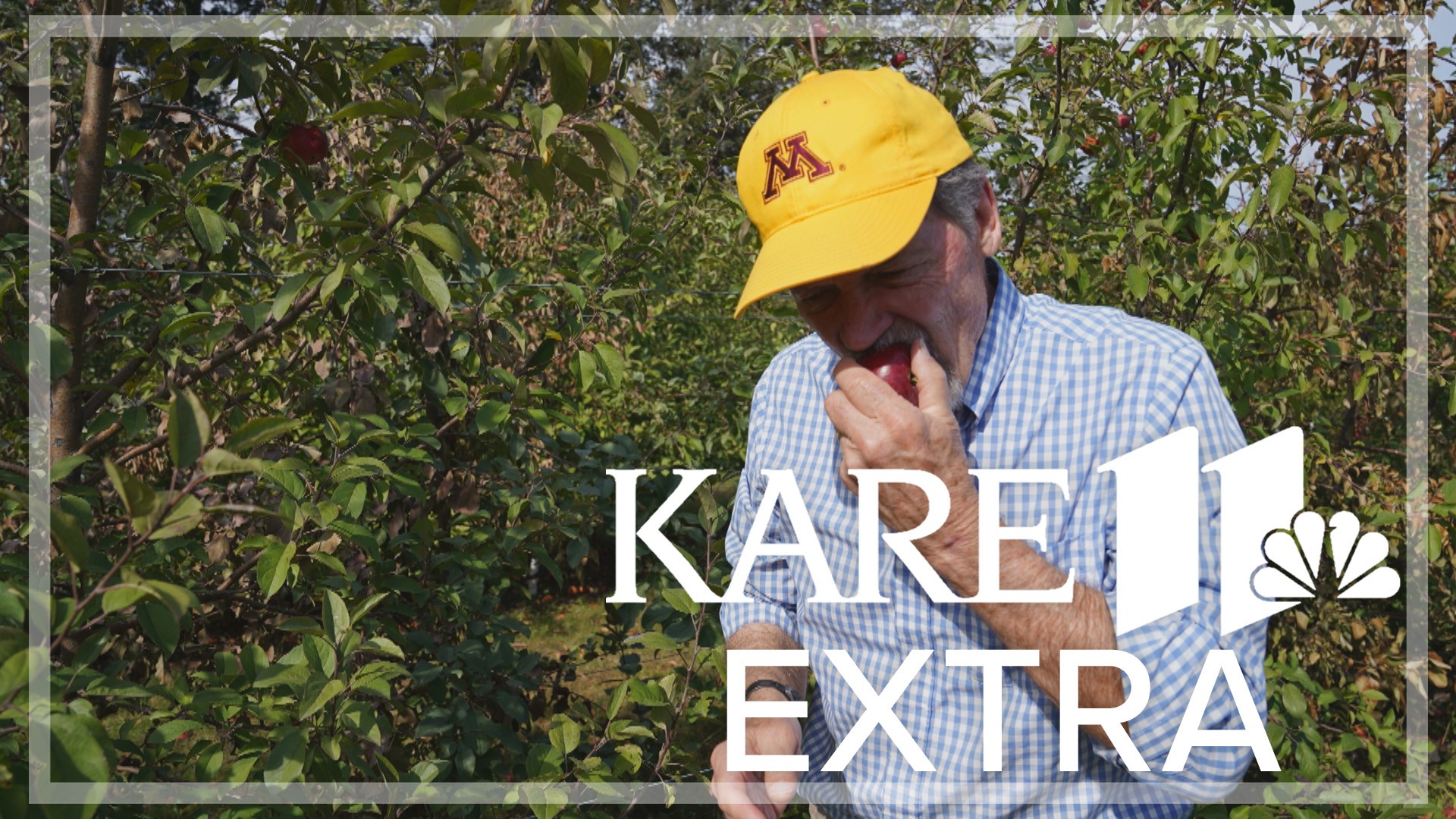CHANHASSEN, Minnesota — Minnesota is known for its apples. Honeycrisp, Haralson, SweeTango, Zestar!, First Kiss and more are favorites thanks to the University of Minnesota's fruit breeding program. While many are familiar with these Minnesota-grown favorites, it's a decades-long process to get them into customers' hands with thousands of them every year not making the cut.
The breeding process starts in the spring.
"We only get one chance each year to save the world from mediocre apples," said David Bedford, senior research fellow and apple breeder at the UMN Horticultural Research Center at the Minnesota Landscape Arboretum.
Researchers identify what cross they want to make by looking at a variety's strengths and weaknesses. For example, one parent may have a high resistance to apple scab while not crisp while the other parent may be crisp but not disease resistant. Before the apple trees bloom, the team will cover limbs they plan to use for breeding with a paper bag so open flowers are not exposed to the bees. The bags are removed for just a few minutes in order for them to apply the pollen they've chosen.

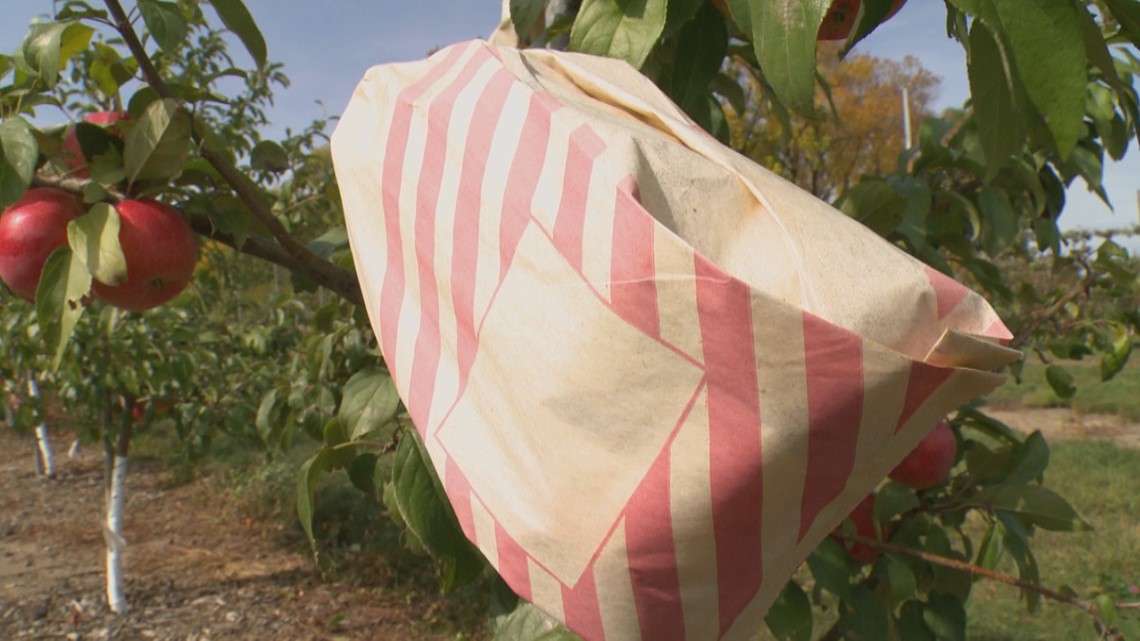
"We let the fruit grow for the rest of the season... inside that fruit are the hybrid seeds that were part of our cross. Those seeds will be extracted," Bedford explained. "We'll grow those seeds during the winter in a greenhouse and develop thousands of trees."
Each year, the team adds 4,000-5,000 apple trees to their research orchards — located just west of Chanhassen.
Once the trees come to maturity, they have to survive the ultimate taste test.
"We have to make a pretty quick decision. So literally after five to six years, they have two to three minutes to impress us," Bedford said.

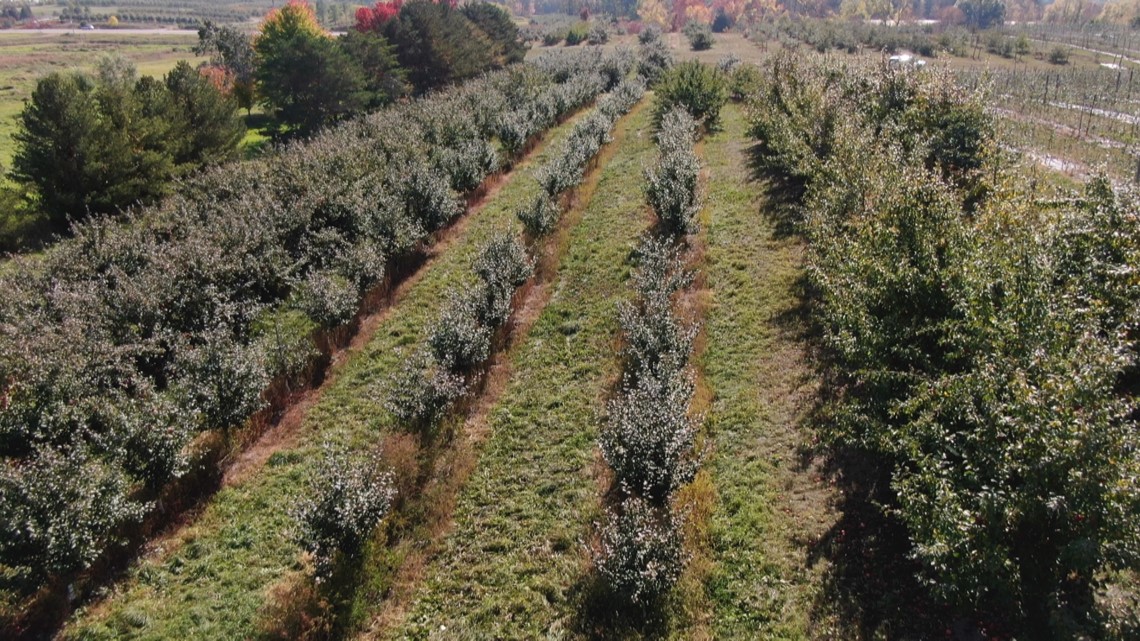
Most of the apples are not good enough to make it to the second round.
"In our world, 'not so bad' is the kiss of death," said Bedford, now in his 44th year of apple breeding and tasting.
Starting in August every year, crews spend two and a half months tasting hundreds of apples every week.
In the early years, Bedford did it all. Then Winford McIntosh, a senior research plot technician at the UMN Horticultural Research Center, joined him.
"It was just he and I for many years. But now we've expanded it to a four-person team to, I guess, share the pain you might say," said Bedford, laughing.

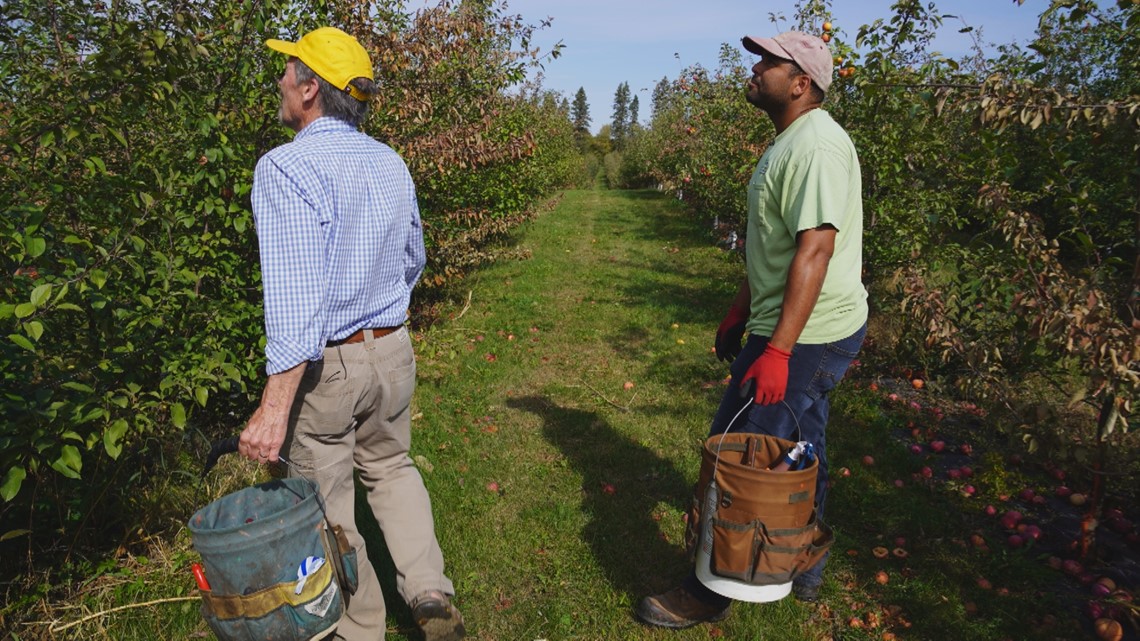
The four-person team spends about eight hours a week tasting hundreds of apples. McIntosh explained that just the day before our interview, the team collectively bit into about 1,200 apples.
"If you have too many harsh apples, too many with high acidity, then your mouth just goes blank. It's basically on fire. At that point you have to stop," Bedford said.
To find out if an apple is ready to taste, the apple gets sprayed with iodine. Starch is found in an immature apple. The darker the apple appears, the more starch it contains. As the apple ripens, starch is converted to sugar.
The team uses a starch-iodine test chart to determine the apple's ripeness.

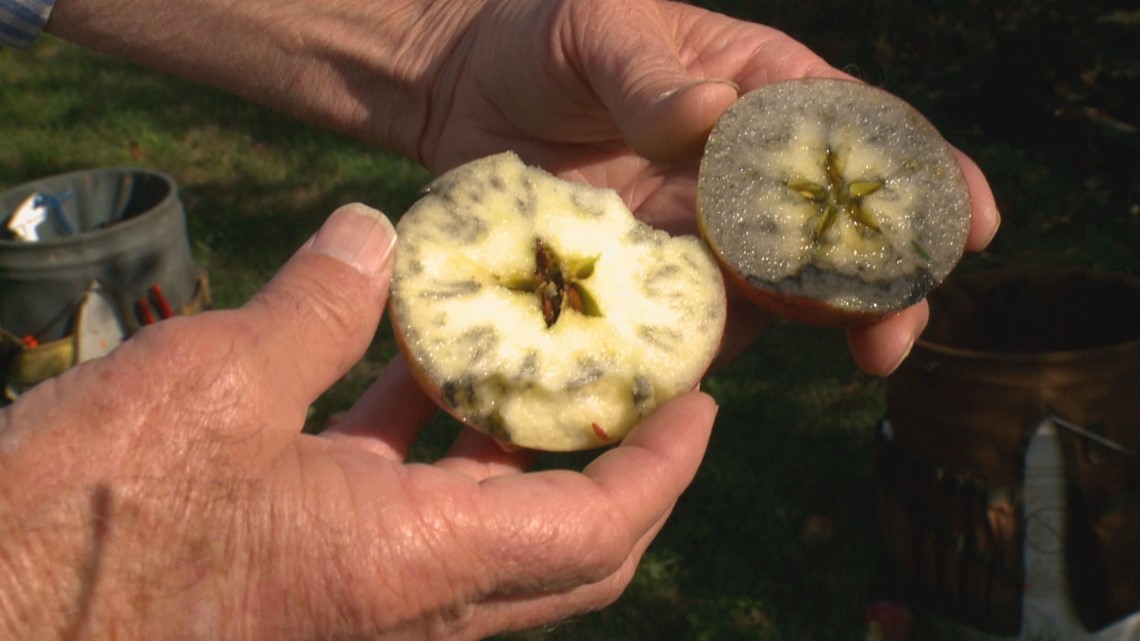
Trees with ripe fruit get three chances to impress.
"We have the best of hope for all of them but the reality is only a small percentage of them are good enough to make the cut," Bedford said.
Trees that do not make the cut, get marked for removal with orange spray paint. If they find one worth considering for the second stage of testing, it gets a blue tie. They will then come back the next day to try again with fresh taste buds.
In a normal year, they will eliminate 3,000-4,000 apple trees.
While appearance matters, Bedford and McIntosh spent most of the time during our visit discussing an apple's flavor and texture.
"We're looking for good texture... and flavor that is high sugar, high acid but balanced between the two so that the acid isn't enough to burn your mouth out but the acid needs to be present in order to have that flavor pack a punch," McIntosh explained.

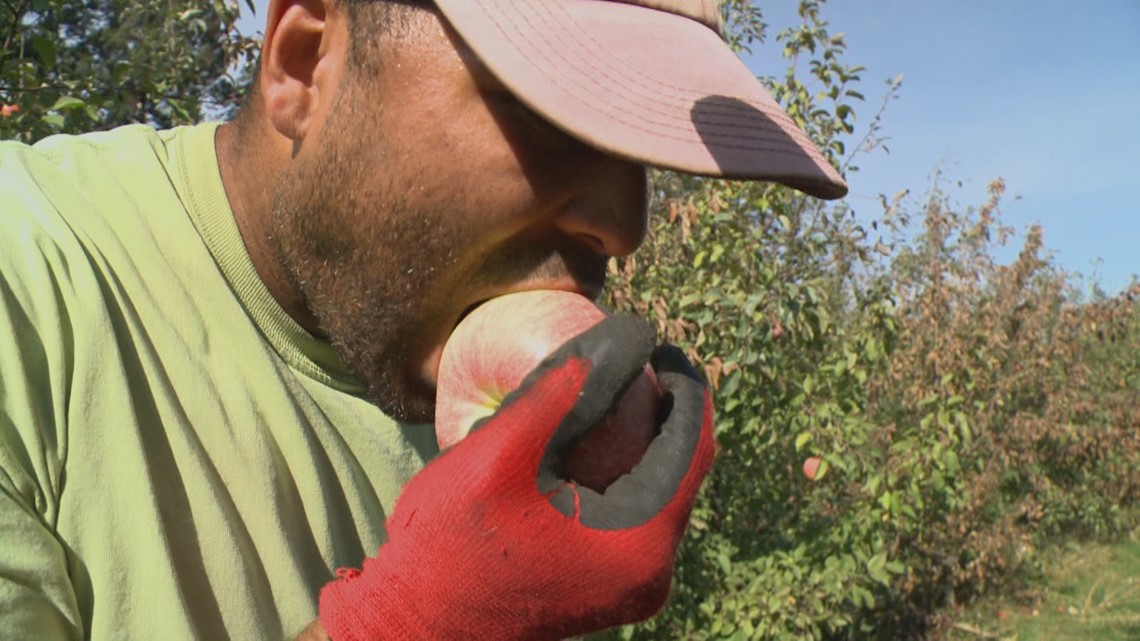
One out of every 300 trees or so makes it out of the first round and into the second; Bedford said it ends up being about 10-12 selections per year.
"It's given a testing number. That tree is cloned... we replicate it genetically by grafting four new trees and those go on to the next round of testing that's called 'second test.'"
McIntosh said they often call second test the "Disneyland of apple breeding." "It's just magical. It really is," he said.
Researchers spend anywhere from five to fifteen years in second test evaluating about 20 different characteristics.
Only one out of about 10,000 makes it to the end. In 1991, it was Honeycrisp.
"Honeycrisp just exploded the possibilities... I feel for us in breeding, and for the consumer, once you've had that Honeycrisp texture, it's hard to go back," Bedford said.

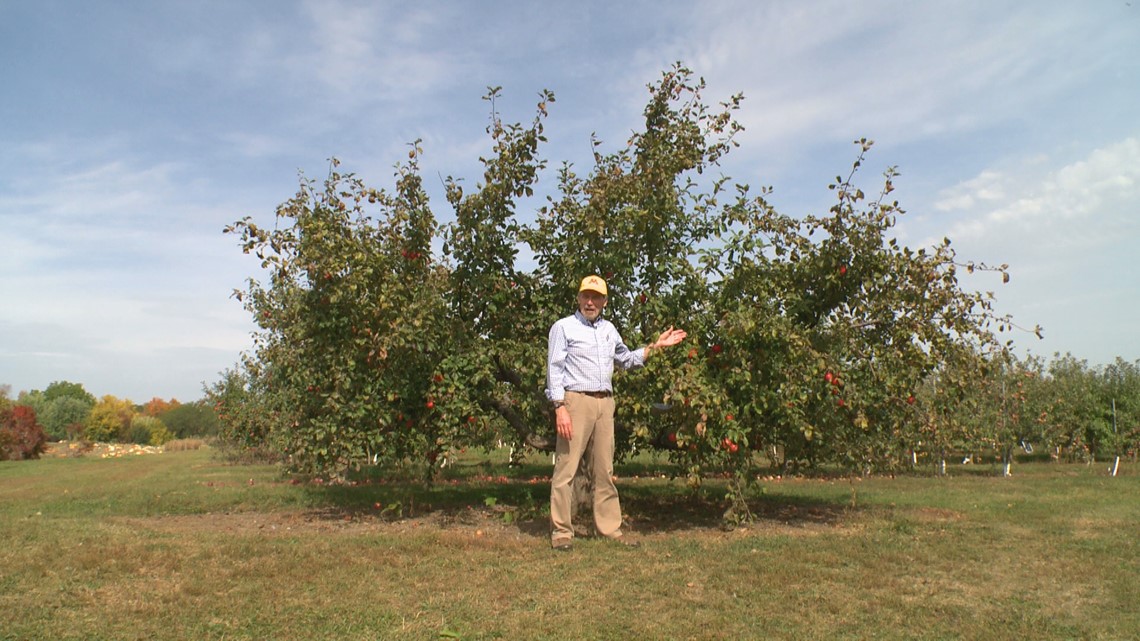
Honeycrisp is now the U's most widely known apple. It's the third bestseller in the U.S. in terms of volume but number one in terms of revenue.
"It's got a special spot in our hearts," Bedford said.
The apple breeding program has a long history of developing high-quality, hardy apples.
The original program began in the late 1800s in hopes of developing apple trees that could survive Minnesota's winters. But the program began in earnest in the early 1900s after the U purchased property in Carver County. It's one of only three university-based apple breeding programs in the country.
Haralson came out in 1922 and is now celebrating its 100th birthday.
"If you grew up in Minnesota, you probably knew about Haralson and that was our first hit," Bedford said.
SweeTango came in 2008 — inheriting the crisp texture of Honeycrisp and the juiciness of Zestar!

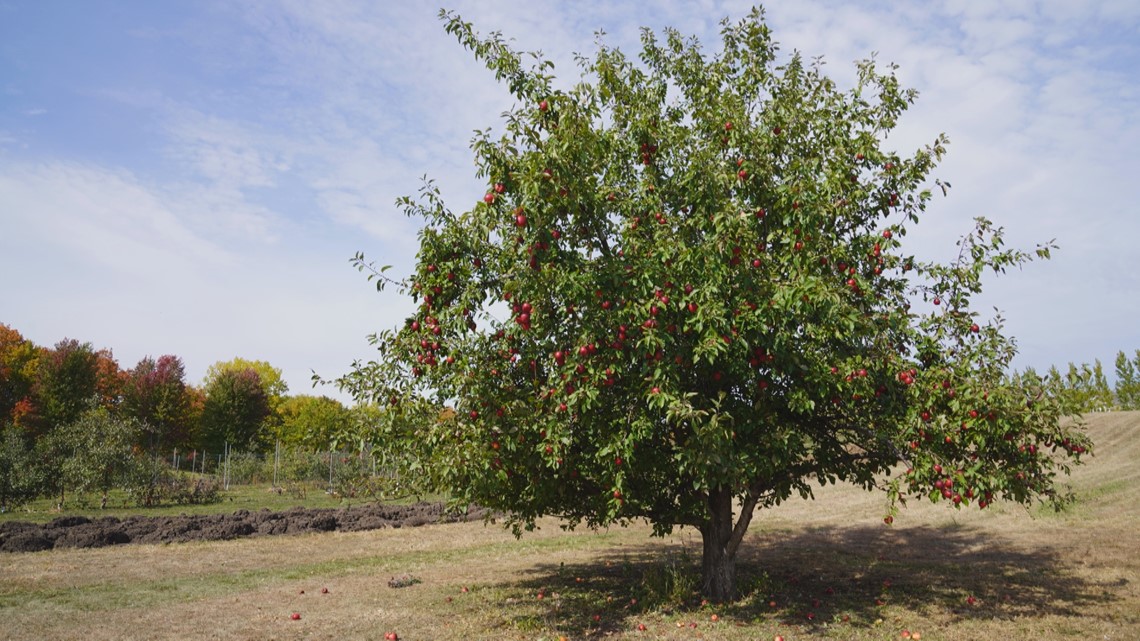
Standing next to the original tree, Bedford said, "It was so remarkable that it had that perfect balance of sugar and acid and that crisp, Honeycrisp texture. We knew we had a winner right away."
Finding a winner takes about 20 years. The program's 29th variety is now waiting to be announced. They're going through the first stages of release which include patenting and naming the variety.
While Bedford cannot say much about the new apple, he mentioned, "I can tell you that it's a Honeycrisp child. It has wonderful texture, a very fruity... some would say almost a tropical flavor."

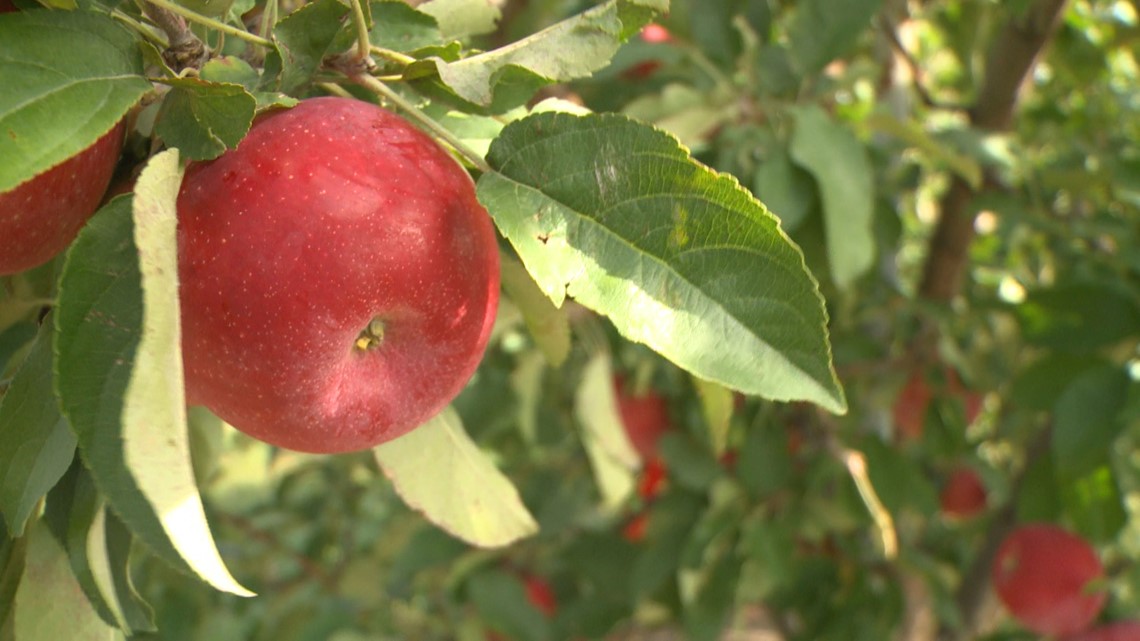
Once the apple is introduced, newly released trees are licensed and distributed to commercial growers to begin propagating. It takes another four to five years before consumers will then see those apples in grocery stores.
About the 29th variety, Bedford said, "I can tell you after 44 years of doing this, there are no perfect apples but some are a lot closer to perfection than others and I think this one got most of the traits right."
After hearing Bedford talk about apples, it may be surprising to learn that he didn't always like apples.
"That was because I was raised on Red Delicious; I like to say I'm a recovering Red Delicious eater," Bedford said.

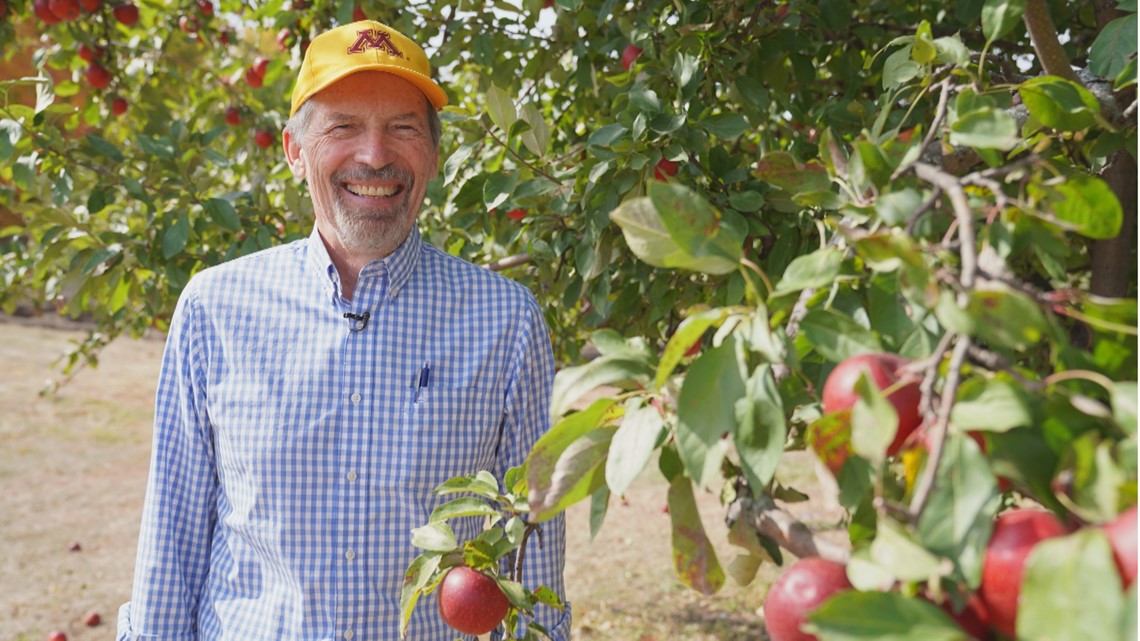
What are his favorite apples?
"That's like asking someone who their favorite child is. I've got several favorites and they all come from Honeycrisp. I'd have to say Honeycrisp, SweeTango and First Kiss are my favorites," Bedford said "But you know what, we've got some... that could rival them for my absolute favorite."
The U's 28th variety, Triumph, was introduced in 2021 — a cross between Honeycrisp and Liberty. It has a high resistance to apple scab.
Home gardeners will be able to get their hands on Triumph trees in the spring at garden centers and nurseries but it will take another four to five years before appearing in grocery stores.
MORE NEWS: HOF broadcaster Pat Miles finds healing through authoring new book, 'Before All Is Said And Done'
Watch more local news:
Watch the latest local news from the Twin Cities in our YouTube playlist:

